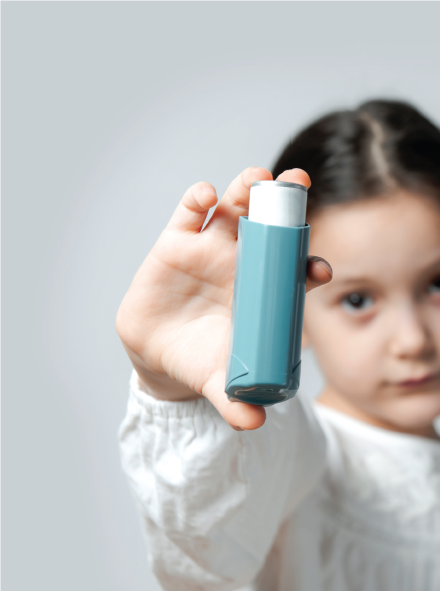
It can be difficult to distinguish if your child has a common cold or cough or a more severe respiratory condition like asthma. A pediatric pulmonologist at CBMC explains.
Asthma is the most common chronic condition among children, according to the American Lung Association. But no child should have to suffer from shortness of breath, coughing, wheezing and/or chest pain when the condition itself is so manageable (though not curable).
Anas Al-Turki, M.D., a pediatric pulmonologist at Cooperman Barnabas Medical Center’s Pediatric Specialty Center at West Orange and a member of the RWJBarnabas Health Medical Group, explains why it’s important to see a specialist if your child is exhibiting asthma symptoms, what treatment options are available, triggers to avoid and more.
From a physiological perspective, what is asthma?
It’s when your airway is sensitive, so it constricts or narrows in response to various allergens or factors such as dust, pollen, cat dander, dog dander and exercise. There are two main types: virus-induced asthma, which is triggered by a cold and usually presents in toddlers and younger kids, and allergic-asthma, which is found more in older kids and during allergy season.
What are the main symptoms?
The big ones are shortness of breath, coughing, wheezing, chest tightness, chest pain and sometimes low exercise tolerance. Each child is different, but symptoms usually start in the toddler years or in the teenage years at age 13 or 14. Most of the time patients outgrow asthma by their 20s and 30s.
We know spring is a big time for allergies, but what are the summer triggers?
Heat and humidity are big factors for asthma. I always advise patients [with asthma] to use a dehumidifier at home and avoid heat and humidity as much as possible in the summer months.
After diagnosis, how do you work with patients and their parents to keep their asthma under control?
I tell my patients to use an inhaler at the first sign of a cold, or if they have coughing, a runny nose, chest pain or chest tightness. Additionally, those who play sports or exercise should use an inhaler 15–20 minutes prior to activity.
Other than inhalers, what are some other treatment options that you prescribe?
There are a large variety of inhalers, as well as nebulizers, chewable pills, liquid pills and, for severe cases, injections. The treatment plan depends on the patient.
How do you work with the multi-disciplinary team at CBMC to treat these patients?
We’re a very well-rounded team with multiple pulmonologists, respiratory therapists, a nurse, a social worker and allergists, as well as other specialists such as ENTs and cardiologists [who help treat] the chest pain. We perform what’s called pulmonary function testing, where we look at the function of the lungs. It’s a simple, non-invasive procedure where we use a computer to gauge how strong the lungs are.
When should a parent get their child checked out by a specialist?
It’s very hard for family members and even pediatricians to distinguish between coughing and cold symptoms or asthma. This is one of the main reasons they should seek out a specialist—to help answer this question. So many other things can mimic asthma such as an upper respiratory tract infection and foreign body aspiration, especially in toddlers if they put something in their mouth and it goes into their lung. Part of my job as a pediatric pulmonologist is to help patients figure out what their triggers are so they can avoid them and overall improve their health.
To learn more about the Pediatric Specialty Center at Cooperman Barnabas Medical Center, call 973-322-6900.